Many bus drivers chose to retire or leave the profession after the COVID-19 pandemic, causing a national shortage that left transportation companies scrambling to fill routes. Meanwhile, school districts are often forced to pay higher rates to companies outside their contracts for rides to after school events.
Last year, the shortage hit Monroe’s public schools hardest for transportation to sports and other extracurricular activities, according to Superintendent Joseph Kobza.
“Unfortunately, those regional vendors know that we’re in a pickle so to speak,” Kobza said. “We end up getting charged more to use their services than if we used All-Star.”

For example, the same trip to take a soccer team to an away game at Pomperaug High School may cost double or triple of what All-Star Transportation charges, according to Kobza.
Finance Director Ronald Bunovsky Jr. said rides to and from extra curricular activities by outside transportation companies added about $200,000 to the transportation line item in the Board of Education budget, increasing it from about $3.7 million to $3.9 million.
Of that, athletics was the main driver, accounting for around $99,000, Bunovsky said.
All-Star Transportation, which has 17 bus terminals in Connecticut, has served Monroe’s public schools since 2012. The company has four years left on its five-year-contract.
“All-Star has always been a good partner for us, very organized and very efficient in getting our kids to and from school,” Kobza said. “I completely understand the driver shortage and unfortunately that impacts our bottom line when it comes to our transportation expenses.”
Kobza said he has heard a few “horror stories” of other school districts in Connecticut canceling multiple routes on a daily, and sometimes weekly basis, because there are not enough drivers to cover it.
“We’ve had days where we’ve had to do some maneuvering to get kids to schools,” he said. “I don’t think we had more than three-or-four days last year where we couldn’t get all of the routes to school covered. It was a small issue for us.”
Kobza said it was more of an issue when students first came back to school during the pandemic and a bus driver had to be quarantined.
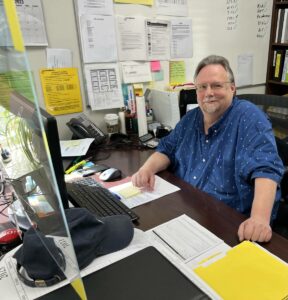
During those times, Mike Lawlor, manager of All-Star Transportation’s Monroe bus terminal, and his dispatcher both pitched in and drove a bus to cover a run.
When they were still short, Kobza said a bus would go back out after completing its run to pickup the remaining students.
“They’re always good about communicating with us,” Kobza said of the daily 5 a.m. phone calls with All-Star. “If they have a message, we reach out to affected families only.”
Those families were told their children’s bus would not be on time, given the later bus time, and the option to drive their child to school.
Monroe Public Schools has three bus tiers: Masuk High School; Jockey Hollow Middle and Monroe Elementary schools; and Fawn Hollow and Stepney elementary schools. Last year, Kobza said the second tier was the hardest to cover, because it used the entire bus fleet.
Drivers wanted
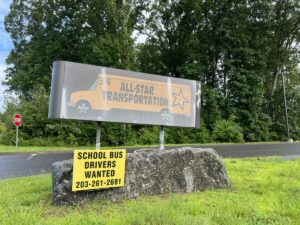
Rows of All-Star’s fleet of yellow buses sat in the parking lot Tuesday morning, while staff members busily worked inside the gray clapboard office building in preparation for the new school year.
“We anticipate having 37 drivers,” Lawlor said. “Ideally, we would like to have 40 to 42. That’s where we were before COVID.”
“You definitely are ahead of last year,” said Steve Gardner, All-Star’s general manager, who sat in a chair in front of Lawlor’s desk.
Lawlor said the shortage of drivers began locally before the pandemic, but worsened after that.
Also seated in Lawlor’s office were Carol Vilmenay, a bus driver of 38 years, and Breanne Curtis, a part-time monitor and bus driver last year, who will be a full-time driver this year.
A lawn sign at the end of All-Star Transportation’s driveway at 34 Enterprise Drive says: “School Bus Drivers Wanted, 203-261-2691.” The signs are also displayed in front of Monroe’s public schools in town.
“We’ve allowed them to put signs out at all our school buildings and on SchoolMessenger we sent out a blast to the community, letting people know All-Star is hiring,” Kobza said in a telephone interview.
Lawlor said his company also advertises on Indeed.
Precious cargo

To become a school bus driver, applicants must obtain their CDL (commercial driver’s license) with a passenger and school bus endorsement and have a clean driving record.
Though it is now legal, Lawlor said federal law still restricts marijuana use for bus drivers.
“Training for your CDL takes six weeks, give or take,” he said.
“We do it in-house, ” Gardner said.
“We train and we pay during training,” Lawlor added.
Curtis obtained her license in April and started her training in the middle of February. “It’s intimidating at first, but it’s great,” she said of the experience.
“We get them in the bus,” Gardner said. “They sit in the seat, look in the mirrors and get to feel what it’s like to be the bus driver.”
All job candidates undergo an extensive background check.
“We check them sideways, back and forth, up and down,” Lawlor said.
“We’re required to do criminal background checks, driving history and DCF,” Gardner said of looking into any complaints with the Department of Children and Families. “We’re not hauling boxes in the back of a truck.”
“It’s precious cargo,” Curtis said.
Starting pay for bus drivers is $23.86 an hour for the upcoming school year with pay increases for continuous service, according to Lawlor.
The average bus run is from 6 to 9 a.m. and 1:30 to 4:30 in the afternoon, according to Lawlor. Drivers are expected to arrive at the bus terminal 15 to 20 minutes before their shift. A driver will do a run for each of the three tiers.
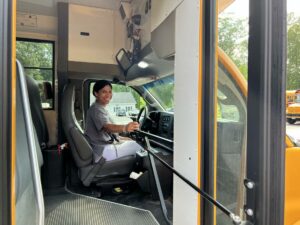
“No child is unloaded unless there is an authorized person there,” Vilmenay said.
“When a bus comes back to the lot, we do a child check to make sure there are no kids sleeping on the bus — and we do it twice,” Lawlor said. “The driver does it, then a driver from a different bus double checks to ensure no child was left behind.”
“It’s done between runs too,” Vilmenay said. “I had my son fall asleep many times going to school in the morning, and you wake them up and off they go.”
“We also have a required safety check,” Lawlor said of the buses, “from the top to the bottom, from the lights to the lug nuts.”
“Twice a day,” Gardner added.
If any problems arise, All-Star is in constant contact with the schools, the Board of Education, Kobza or Assistant Superintendent of Schools Sheila Casinelli, according to Lawlor.
A comfort level
Vilmenay and Curtis both started out as bus monitors, keeping an eye on the children while the driver concentrates on the road, before deciding to train to be drivers themselves.
“I needed a job with flexibility for my kids’ schedule,” said Curtis, whose two sons attend Stepney Elementary School.
“Over the years, a lot of mothers I’ve spoken to have come in to drive, because people don’t know the flexibility we have,” Vilmenay said. “You work when your children are in school. I have four children, so on a snow day, I don’t have to call out of work when school is canceled.”
Now Vilmenay said she watches her grandchildren for her daughter, a Stratford special education teacher who also lives in Monroe, on days when Stratford has school and Monroe cancels classes.
Curtis said drivers also have the option of earning extra money by driving students to field trips and sporting events.

Both Vilmenay and Curtis said they feel like students are their own kids during the bus runs.
By working in her children’s school district, Vilmenay said she also got to know the parents, teachers and administrative staff at the town’s schools. “You really get to know the community,” she said. “That’s what I like.”
“I know a lot of kids on the bus,” Curtis said. “I know a lot of people. The kids recognize me, ‘oh, you’re so-and-so’s mom!’ It’s a comfort level for the kids.”
“It’s important for the parents to trust you,” Gardner said, “and for them to know the six hours they’re not with their children, that they’re in good hands and will come back in the same condition they left in.”
All respectful comments with the commenter’s first and last name are welcome.

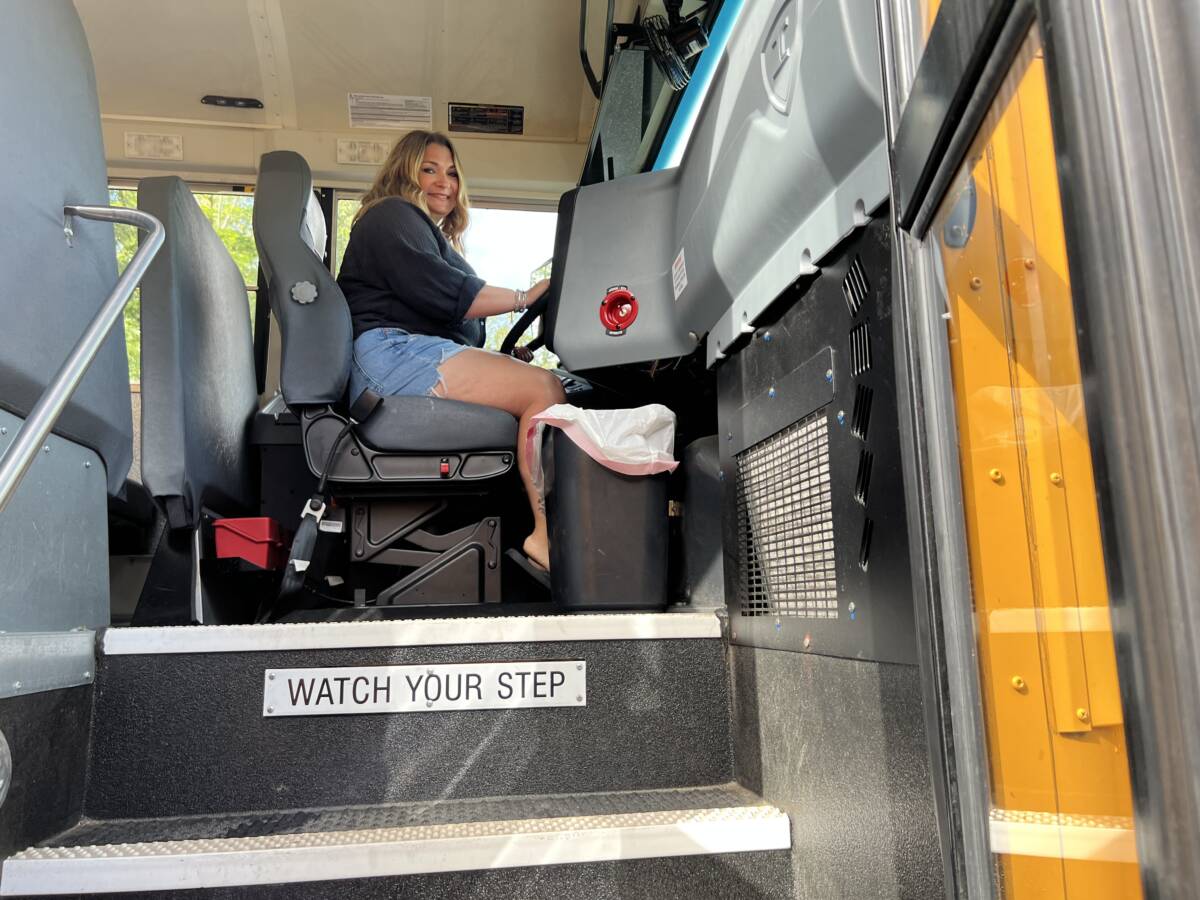
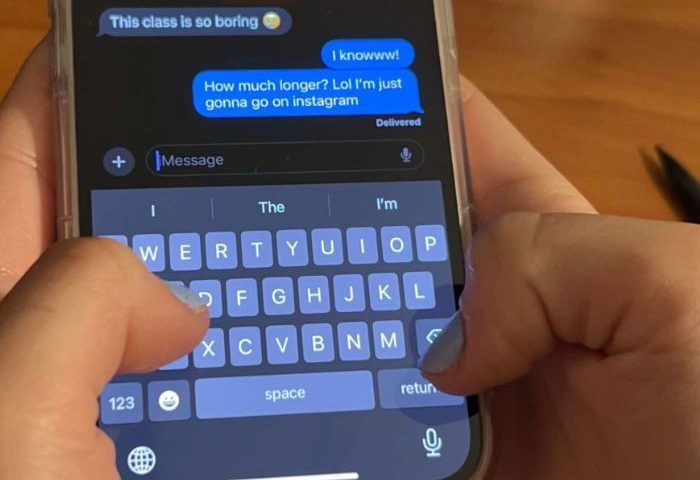


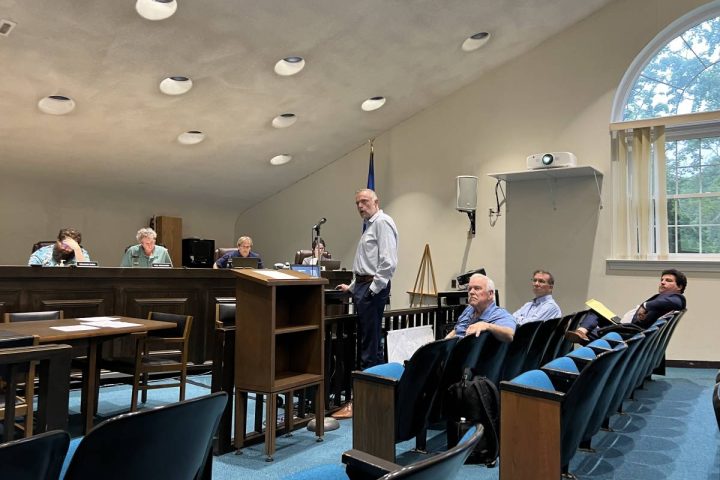


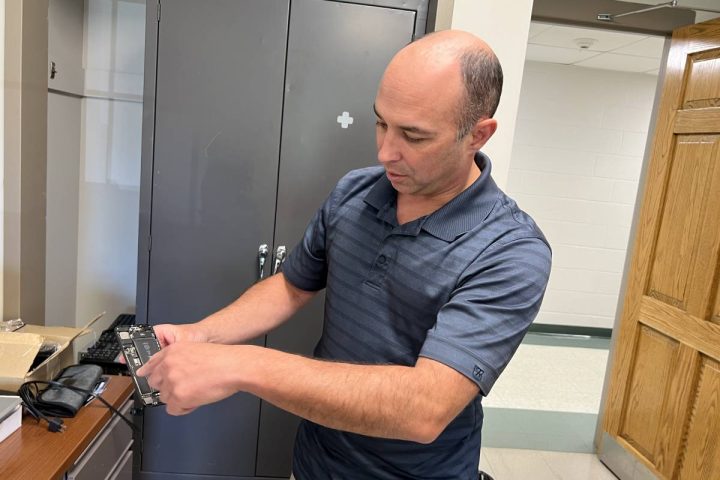
Simple solution: have the parents sign waivers and Have the poi stents drive their kids to sporting events. Save 100,000 tax Payers dollars.